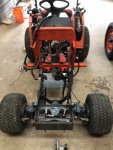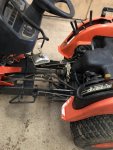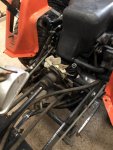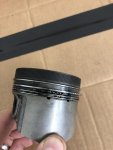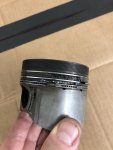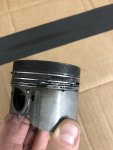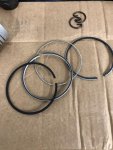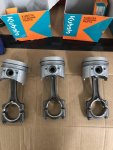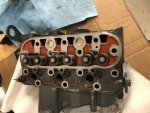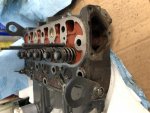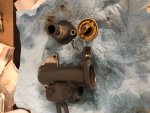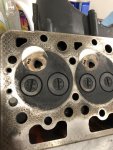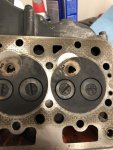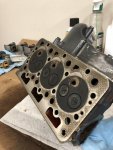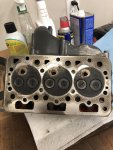As some of you know, I purchased a severely neglected BX1800 and a similarly neglected L2550 a month or so ago. This thread is about the BX1800. I posted some pictures and questions about its engine in the "Odd Colored Piston Head" thread.
I really enjoy reading about and seeing folks work on their tractors, so I thought that I would make a full thread regarding the rehabilitation process here. Please note, I am a total rookie at this! I purchased this tractor knowing it needed lots of work, but it was a perfect opportunity for me to learn about engines and tractors. So, this is not necessarily intended as a teaching thread; but, perhaps, folks can learn from my mistakes along the way.
Here we go.
When I first got the BX1800, I moved it into my barn and removed its faded hood, broken grill and under skirts, and the hood support. I will be able to repaint the hood; it's just faded. The plastic parts under the hood? Well, they are cracked in some places, broken in others, and not really usable. I will need to replace these at some point. Please let me know if you have any!
Then, I started taking various parts off of the engine preparatory to removing it. This included the muffler and exhaust manifold, the starter (to be tested later), etc. I also unbolted the engine from the mounts and disconnected the radiator from the frame. Not long after, I successfully removed the engine!
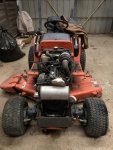
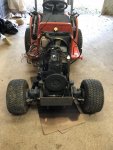
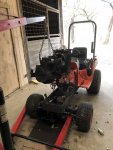
Today, I removed the floor, which Kubota calls the step. The rubber mat was cracked and brittle; I'll need to replace that. The step had some rust spots on it, which is consistent with this tractor living outside for many years. But, I'll sand those off, spray some rust converter on it, then re-finish it in Kubota Orange. Given the cost of replacing this piece, I am very happy it is salvageable.
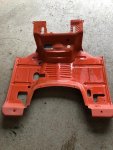
I also began de-greasing and cleaning the frame. There was a ton of oily buildup around the steering cylinder, which is disconcerting. I cannot tell where it came from. I am hoping to clean really well around it so that I will be able to detect any leaks from the hoses later. To do this, can I disconnect the hydraulic hoses? Or, are they under pressure? It would make it much easier to clean them and remove some rust spots from the frame without them attached.
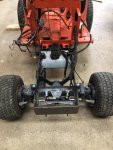
I really enjoy reading about and seeing folks work on their tractors, so I thought that I would make a full thread regarding the rehabilitation process here. Please note, I am a total rookie at this! I purchased this tractor knowing it needed lots of work, but it was a perfect opportunity for me to learn about engines and tractors. So, this is not necessarily intended as a teaching thread; but, perhaps, folks can learn from my mistakes along the way.
Here we go.
When I first got the BX1800, I moved it into my barn and removed its faded hood, broken grill and under skirts, and the hood support. I will be able to repaint the hood; it's just faded. The plastic parts under the hood? Well, they are cracked in some places, broken in others, and not really usable. I will need to replace these at some point. Please let me know if you have any!
Then, I started taking various parts off of the engine preparatory to removing it. This included the muffler and exhaust manifold, the starter (to be tested later), etc. I also unbolted the engine from the mounts and disconnected the radiator from the frame. Not long after, I successfully removed the engine!



Today, I removed the floor, which Kubota calls the step. The rubber mat was cracked and brittle; I'll need to replace that. The step had some rust spots on it, which is consistent with this tractor living outside for many years. But, I'll sand those off, spray some rust converter on it, then re-finish it in Kubota Orange. Given the cost of replacing this piece, I am very happy it is salvageable.

I also began de-greasing and cleaning the frame. There was a ton of oily buildup around the steering cylinder, which is disconcerting. I cannot tell where it came from. I am hoping to clean really well around it so that I will be able to detect any leaks from the hoses later. To do this, can I disconnect the hydraulic hoses? Or, are they under pressure? It would make it much easier to clean them and remove some rust spots from the frame without them attached.

Last edited:



